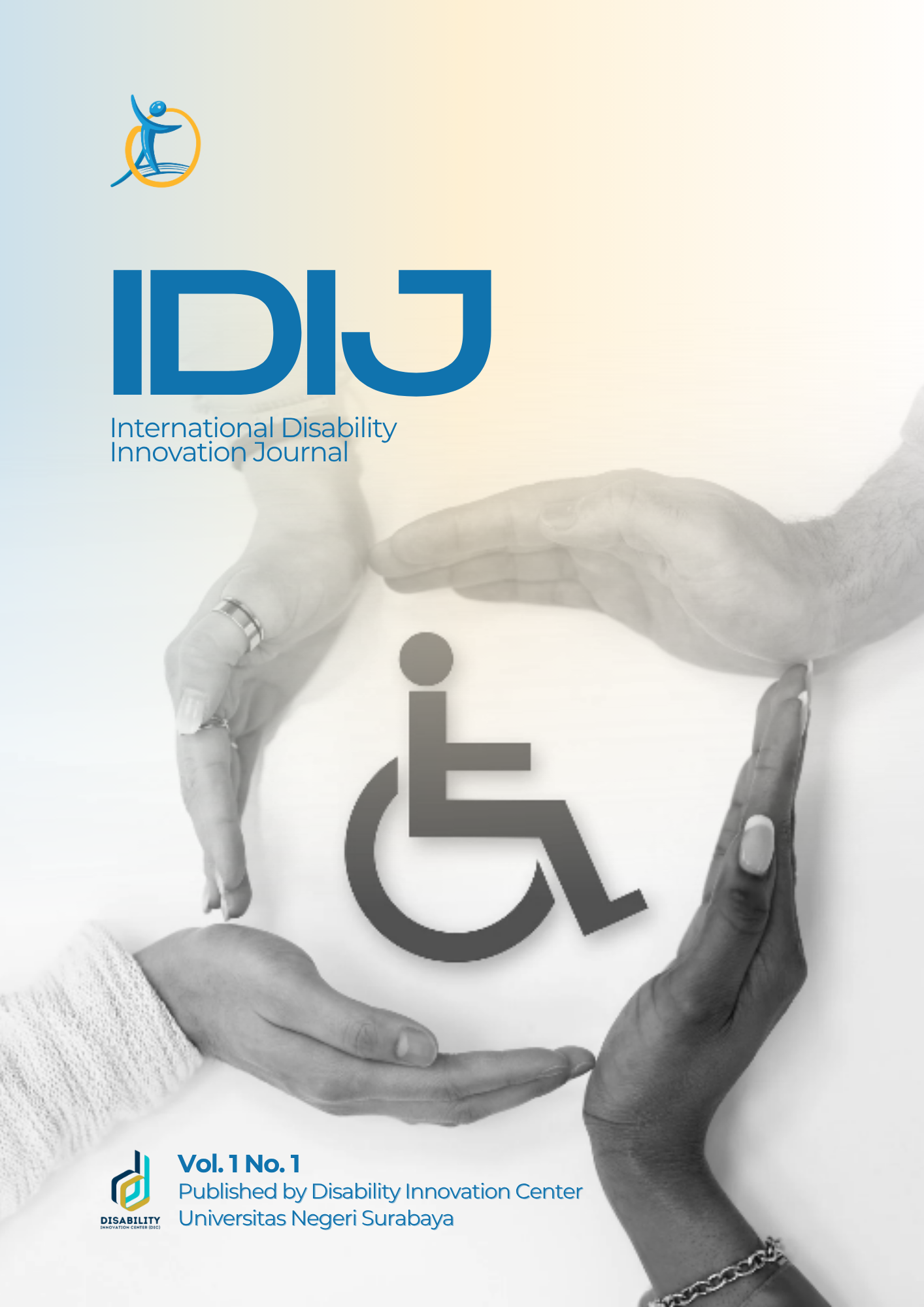Assistive Technology in Communication Development Learning for Deaf Students: A Literature Review
Abstract
Students with hearing impairments face significant barriers in accessing auditory-based information, particularly in the learning of sound and rhythm perception within communication training. With the advancement of technology, various assistive devices have been developed to support deaf and hard-of-hearing students in recognizing, understanding, and responding to auditory stimuli through visual, tactile, and multisensory approaches. This article aims to review the literature on the use of assistive technology in the teaching of sound and rhythm perception for students with hearing disabilities. The method used is a systematic literature review of articles and research findings published in the last ten years. The findings indicate that assistive technologies such as digital hearing aids, FM systems, auditory training applications, and visual-based software have contributed positively to enhancing the engagement and auditory perception skills of students with hearing impairments. However, the implementation of these technologies still faces challenges, including limited access, teacher training gaps, and curriculum adaptation. Therefore, collaboration among teachers, schools, parents, and policymakers is essential to ensure the effective integration of assistive technology in communication learning. This review is expected to serve as a reference for practitioners and researchers in developing inclusive education responsive to the needs of students with hearing impairments.
Downloads
Published
How to Cite
 Abstract views: 57
,
Abstract views: 57
, PDF Downloads: 82
PDF Downloads: 82






.png)
.png)
